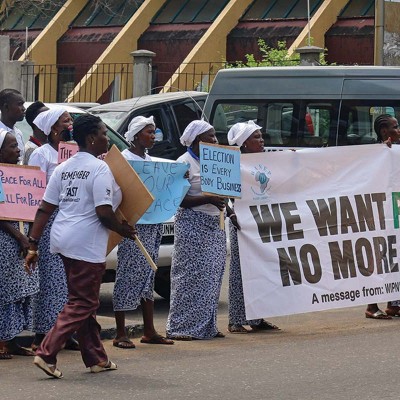Introduction
Ethiopia adopted ethnic federalism and restructured the country’s regions along ethnic lines after the Ethiopian People’s Revolutionary Democratic Front (EPRDF) took power, overthrowing the military junta in 1991. The regime transformed the hitherto highly centralised state into a federal order and redefined citizenship, politics and identity on ethnic grounds.1 The Constitution of the Federal Democratic Republic of Ethiopia also states that the federal structure will base itself on an ethno-linguistic divide. Hence, ethnic federalism in Ethiopia inextricably links identity and territory.
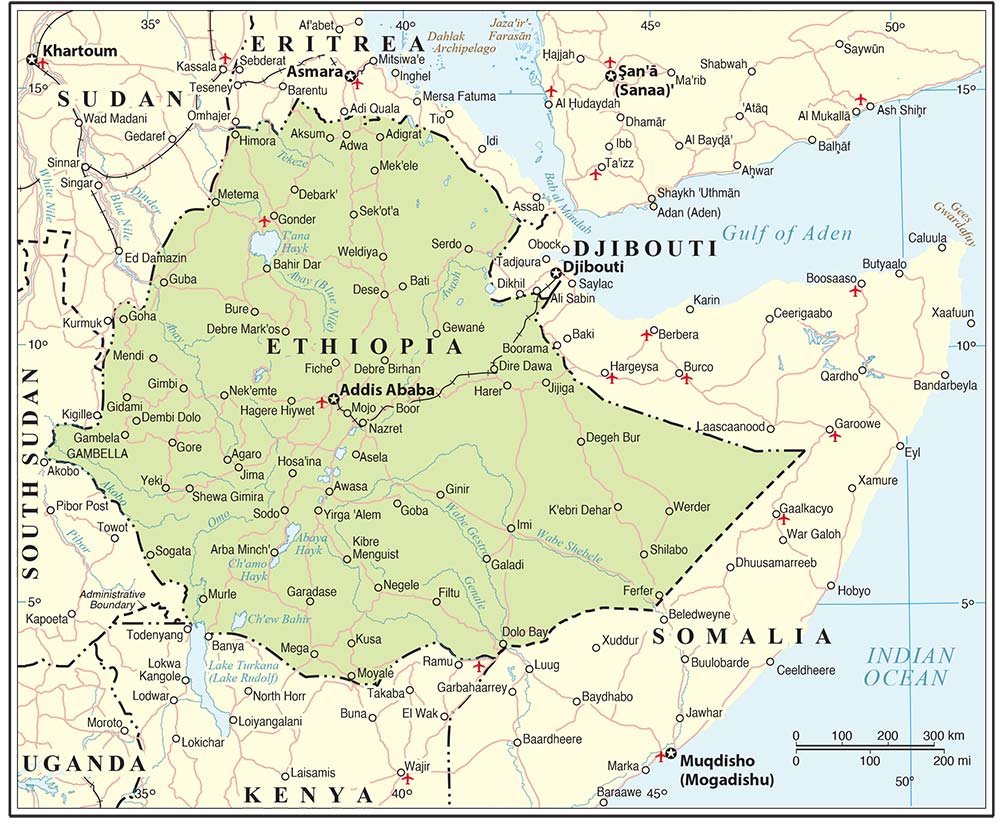
The regime announced its objective to establish an ethnically egalitarian nation-state with the redressing of past injustices. The introduction of ethnic federalism was supposed to be the panacea to solving Ethiopia’s perennial “nationalities question” generated by the flawed nation-building process of the 19th and 20th centuries.
Asnake2 states that the main goals of federal restructuring in Ethiopia were to provide self-determination rights to the ethnic groups of the country, including secession, and also to end ethno-secessionist wars. The presumption that granting Ethiopia’s ethnic groups the right to self-determination would lead to peace and provide a new basis for the unity of the country was the reason behind the federal restructuring of the country since 1991. In the same vein, Jalata3 contended that the regime favoured federal restructuring to respond properly to historical, socio-economic and political challenges, with an emphasis on addressing the historical national identity issues and injustices.
Ethnic federalism is considered by its supporters as the cure-all for holding multi-ethnic Ethiopia together, but it is criticised by others as a dangerous concept that will eventually tear apart the country. Nationalists consider the federal policy as a deliberate ploy to undermine national identity and a deliberate step backwards from the nation-building project. Some understand ethnic federalism to be a malicious Tigrayan People Liberation Front (TPLF) tactic to plant divisions among ethnic groups, to the resultant effect of facilitating rule by the Tigrayan minority. The political system divides rather than unites people by creating mutual suspicion and instituted ethnic dynamics that could easily spiral out of control.
What factors compelled the post-1991 regime to construct multi-ethnic federalism? According to Alem,4 it was a consequence of political necessity and ideological orientation. The conception of the Ethiopian nation by the new leadership – that is, the post-1991 regime – remained strongly influenced by the ideological backgrounds of the incumbents – being the “national oppression thesis”5 inherited from the 1960s and 1970s. As the leadership incumbents were actors in the student movement that espoused the “nationalities question”, together with the land issue, they felt compelled to redefine Ethiopian statehood, favouring ethnic identity and retaining the territorial integrity of the country. To assess Ethiopia’s ethnic federalism, it is essential to first understand what federalism itself is.
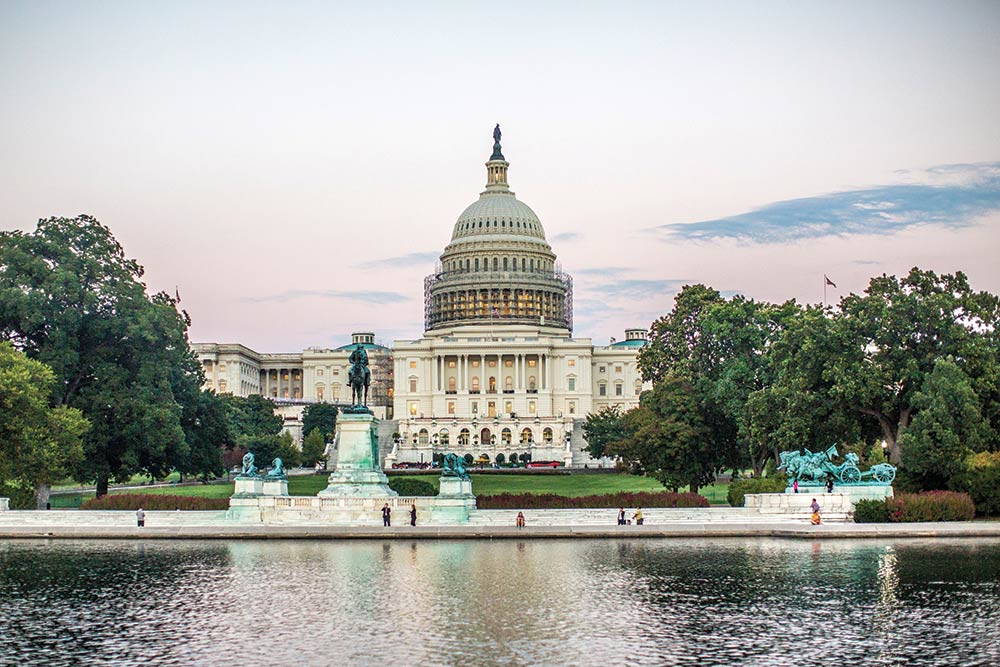
Theorising Federalism
Etymologically, the term “federalism” originated from the Latin term foedus, meaning “covenant”.6 It refers to the sharing of power among autonomous units, and is considered to advocate the values of shared rule and self-rule and to give regions some authority of their own. Federalism is a system of government entailing a division of power between one common and several sub-authorities, each of which acts directly through its own administrative agencies. Riker7 notes that federalism is a state in which “two levels of government rule the same land and people; each level has at least one area of action in which it is autonomous; there is some [constitutional] guarantee… of the autonomy of each government in its own sphere”.
Federalism, at its bare minimum, demands the existence of at least two tiers of government that are autonomous in their own areas of competence. This is complex, as it introduces a range of issues relating to diversity, unity, interdependence, cooperation and conflicts.
The rationale to opt for a unitary, federal or hybrid governance system, in one way or another, is to sustain territorial integrity and create national consensus. The aftermath of the Second World War witnessed the deliberation of federalism as a useful tool of state and/or nation-building projects. Thus, a number of countries in Africa and Asia espoused this system in the post-independence period as a way of catering for contentious claims for autonomy within their territories.
The longest-serving federal political systems in the world are found in the United States of America (1789), Switzerland (1848), Canada (1867) and Australia (1901).8 Despite the success of federalism in these countries, there are many other cases where federalism failed. These include countries in Eastern Europe, such as the Soviet Union, Czechoslovakia and Yugoslavia, and other Third World countries. Advocates of federalism in the 1960s and 1970s, such as Duchacek,9 equated federalism with democracy. Duchacek claimed that “democracy and federalism are always found together [and that] federalism is a territorial dimension of democracy”. However, the view that claims an inextricable linkage between democracy and federalism appears erroneous when considering the empirical experience of the former Soviet Union, Yugoslavia and the current Ethiopia. These countries are lower in democratisation rankings.
According to Stephan,10 federalism can be achieved in two ways: “coming-together” and “holding-together” federations.” The first one occurs when sovereign states agree to form a federation voluntarily for reasons of security, government efficiency and so on. The second emerges when two or more existing sovereign states assent to found a federal system for purposes of governmental efficiency, economic development and security. Such federations can advance economic growth via a removal of barriers for trade and the promotion of peace. Holding-together federalism mostly emerges after consensual parliamentary decisions to maintain a unitary state by establishing a multi-ethnic federal system largely to avoid or settle ethnic, regional and other types of group conflict. This type of federation involves a division of the polity into different sub-units, with each having its own sovereignty with respect to some policies. It stands opposite to coming-together federalism, in which sovereign states come together to create a common central government by surrendering a portion of their sovereignty. It is often considered as a political approach employed to save the collapse of a unitary state and to manage ethnic divisions.
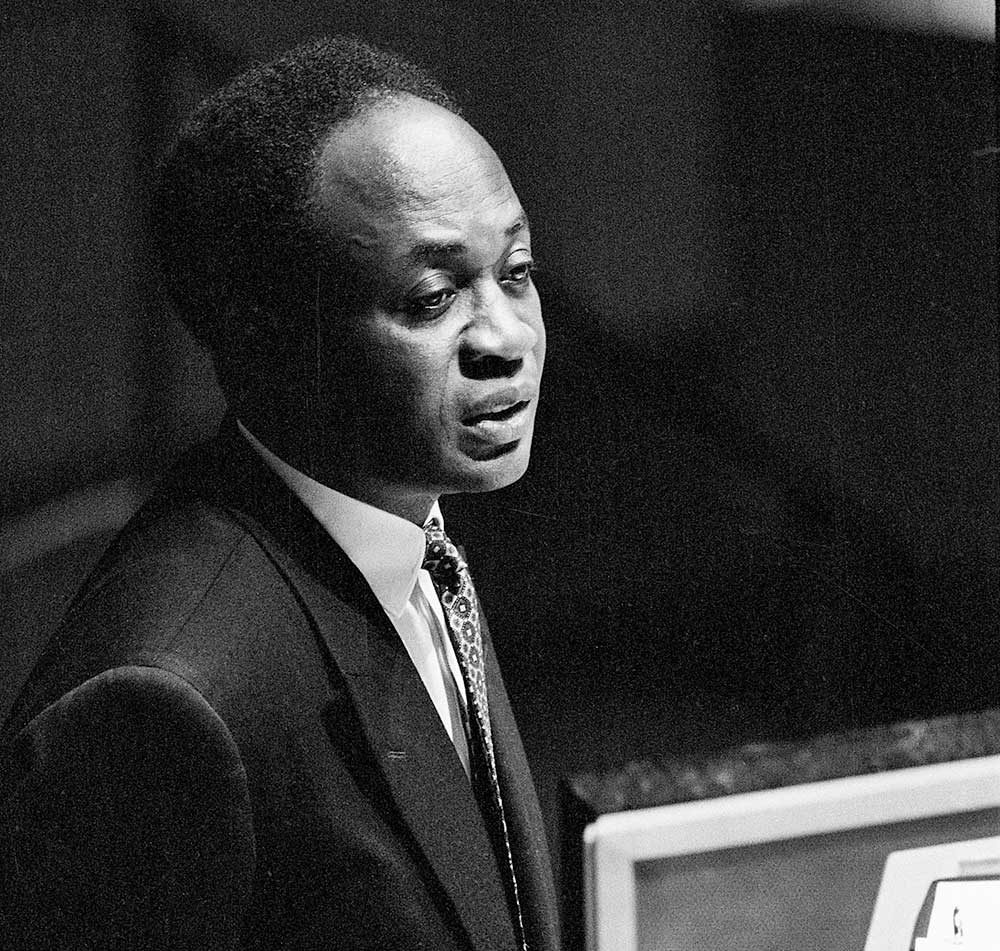
“Putting together” is a third variant that Stephan11 maintains as federalism, and this reflects the experience of Ethiopia. This refers to a union that comes together through coercion or deceitful inclusion of various units by the organised elite. The former Union of Soviet Socialist Republics (USSR) is a typical example of such ethnic groups having the right of self-governance. However, as Keller12 argues, Ethiopia changed its course by putting together a type of federalism where the political sphere became ever more centralised by the TPLF-led federal government.
Federalism in Africa
Federalism in Africa is associated with the colonial enterprise of “divide and rule”. Britain tried to introduce federalism in some of its colonies in Africa. Perceiving it as the furtherance of divide and rule in another form, however, anti-colonial leaders strongly resisted this British attempt. This propelled important personalities of the anti-colonial struggle, such as Kwame Nkrumah of Ghana, to campaign against federalism. After independence, the new African rulers opted for unitary systems of government.
In the African context, Osaghae13 contends that federalism is still necessary to “manage the problems emanating from diversity such as inequitable social and political relations, and unequal development of groups”. Substantiating Osaghae’s point, Kimenyi14 states that “since ethnic groups associate with particular territories, African States are naturally suited for the establishment of federal systems of government”. In the same vein, Horowitz15 considers federalism as an indispensable device to accommodate differences in multicultural states. Unfortunately, as Agbu16 points out, despite the need for federalism in Africa, “federalism has had a poor run in countries where it has been applied.”
Most countries in contemporary Africa are unitarists, with political power vested in the central government, and political leaders are unwilling to entertain federalism, fearing that federalism reinforces tribalism. The new rulers of post-colonial Africa considered that federalism may be a crisis escalator rather than a crisis reducer. Several African countries – Congo (1960–1965), Kenya (1963–1965), Uganda (1962–1966), Mali (1959) and Cameroon (1961–1972) – employed a federal system for a short period of time and then removed it.17 The main reason for this removal of federalism was instability and secession for most sub-Saharan African states. A number of African countries ignored a federal structure because, as Berman18 contends, the sociocultural ecology in many states of Africa is highly intermingled in terms of identity, language and religion. The most striking feature of African identities and communities is their fluidity, heterogeneity and hybridity; a social world of multiple, overlapping and alternate identities with significant movement of people, intermingling of communities and cultural and linguistic borrowing.
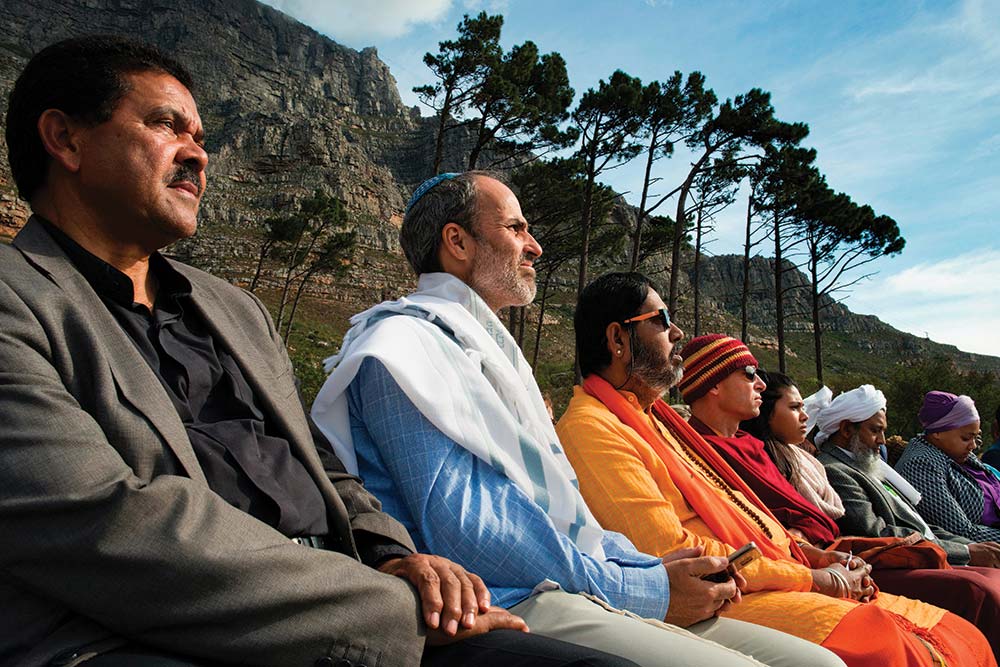
Nevertheless, a few countries in Africa – such as Ethiopia, South Africa and Nigeria – have experience with a federal structure to accommodate ethnic diversity. How these federal systems operated shows significant degrees of difference – for example, Alemayehu19 equates the Ethiopian case with the Bantustans20 of apartheid South Africa.
Competing Views on Ethiopia’s Ethnic Federalism
Ethiopia’s ethnic federalism has garnered much academic attention since it commenced with the current EPRDF regime in 1991, and has caused polarising debates among scholars. Ethiopia’s peculiar nature of federalism is both praised and condemned.
Advocators argue that the execution of ethnic federalism in Ethiopia is the only viable option for the integrity of the Ethiopian state and society. It is further celebrated by some as the panacea for holding multi-ethnic Ethiopia together. The ethno-federal arrangement is considered to maintain the unity of the Ethiopian nations, nationalities and people, on one hand, and the territorial integrity of the state on the other. It is claimed to render stability and provide each region with the opportunity to develop, promote and preserve its language and culture. Some would argue that the federal system not only fosters deliberation and political participation, but also enhances citizens’ capacity to empathise with one another more readily than in a heterogeneous setting. The advocators argue that Ethiopian federalism can be a mechanism to end the protracted and brutal inter-ethnic conflicts that existed before its commencement. They also acknowledge it as being successful in averting the risk of the dismemberment of ethnic groups from Ethiopia, which would otherwise cause the disintegration of the state, such as in the USSR or Yugoslavia.
Others, on the contrary, posit ethnic federalism as a curse that encourages the country’s disintegration. It exacerbates and ignites identity politics and can lead to further disintegration. Critics also argue that the federal experiment has been rather provocative and causes new bloody conflicts between ethnic groups over different interrelated factors – such as new linguistic-territorial claims, competition over political power, border claims, and deprivation of rights and opportunities for minorities living in regional states that are “owned” by certain ethnic groups.
No matter how controversial it may be, what plays a significant role in the success or failure of a federal arrangement is not its framework per se, but how it is implemented. The “nationalities question” was the primary trigger of the 1974 Ethiopian revolution. Granting ethnic groups self-rule presumably had the potential for curbing such problems. Unfortunately, however, the vanguard EPRDF made sure that the federal structure did not encompass such rhetoric. Moreover, the authoritarian nature of the government, coupled again with an inextricable overlap of party and government, hampered the federalism that was introduced.

It is important to consider whether the architects of the Ethiopian federation, with all the limitations and drawbacks mentioned above, had other viable options in designing the internal boundaries of the state – such as a federal design that could respond to ethnic concerns without privileging ethnic identities above other non-ethnic identities, and that would have helped to circumvent the dilemma of ethnically defined states. In due course, federalism of an ethnic kind undeniably essentialises ethnic identities and can cause ethnic conflict.
Ethnic Conflict
The introduction of ethnic federalism has resulted in a number of ethnic conflicts in Ethiopia. There has been an upsurge in ethnic conflicts and the sharpening of boundaries among the different ethnic groups. Ethnicity has become an instrument of political mobilisation, which further perpetuates violence, dissension and a growing sense of separatism in Ethiopia. Ethnicity dominates over other notions of state organisation, political representation and resource entitlement. It is also directed to the constitution of institutions that validate boundaries among the different ethnic groups. This is a formidable challenge and can lead to the eruption of many conflicts among and within regional states.
Thus, one can rightly argue that such trends, which value ethnic identity above all other forms of mobilisation, discourage shared bonds and increase tensions between clans of similar ethno-linguistic groups. This can further dismantle networks and trust among people.
The restructuring of the state into a federal system required the drawing of boundaries that – at least in theory – correspond with ethnicity. However, this process was uneven, as there is no pure overlap between ethnicity and territories due to a prodigious degree of mobility of ethnic groups in all directions. As a result, this generated a number of conflicts among ethnic groups that live in the same or neighbouring regions. An example of this is the conflict between the Guji and the Gedeo in southern Ethiopia, who used to live in the former Sidamo province before the introduction of ethnic federalism. The government policy that gave prime legitimacy for ethnic identity and ethnic rights, and an increasing ethnic self-consciousness, has changed inter-ethnic relations in most parts of the country. In line with the principles of ethnic regionalisation, the Guji – who belong to the Oromo ethnic group – became part of the Oromia region, while the Gedeo became part of the Southern region under the new arrangement. The chief cause of the conflict is that the geographic boundaries of the regional states are not only occupied by homogenous people; the majority of the cases show that ethnicity surpasses geographic boundaries. Consequently, each regional state has a minority ethnic group that has endured the influence of the majority for years. In this specific case, the “Guji in Gedeo zone and the Gedeo in Borana zone are minorities”.21
The Gedeo and Guji conflicts are not exceptions in this regard. In 2018, over “800 000 people were displaced due to the conflict, resulting in the largest number of internally displaced persons in the country”.22 Ethnic-based federalism created an asymmetrical federal structure in which larger ethnic groups, as in the case of the Oromia and Amhara regional states, were given their own ethnic regions. Smaller ethnic groups – as observed in the Southern region, Gambella region and the Benishangul-Gumuz region – were put together to establish multi-ethnic regions. Inter-ethnic conflicts in these heterogeneous regions became rampant, triggered by disputes over the sharing of political power and resources.
Conclusion
Though ideological orientation and political landscape necessitates ethnic federalism, it accentuates conflict of an ethnic kind. Ethnic federalism in Ethiopia is presumably believed to answer the historic “nationalities question”, but it does not help in reducing ethnic tensions and conflicts. In fact, conflict is intensifying due to the ethnic heterogeneity of the regional states and the resource-boundary sharing between different groups. Conflicts are instead escalating and becoming decentralised, which seems to defy the argument that ethnic federalism can be a typical strategy for avoiding conflict in multi-ethnic societies, such as Ethiopia.
Endnotes
- Article 1 of the Federal Democratic Republic of Ethiopia (FDRE) Constitution states: “This constitution establishes a federal and democratic state structure.”
- Asnake, K. (2009) Federalism and Ethnic Conflict in Ethiopia: A Comparative Study of the Somali and Benishangul-Gumuz Regions. Doctoral thesis, Department of Political Science, Leiden University.
- Jalata, H. (2016) EPRDF’s State-building Approach: Responsive or Unresponsive? IFF Working Paper Online, No 22.
- Alem, H. (2005) Multiethnic Federalism in Ethiopia: A Study of the Secession Clause in the Constitution. Publius, pp. 313–335.
- National Operational Thesis is an idea espoused by the Ethiopian student movement in the wake of the 1974 revolution. The idea tries to present Ethiopia as a “prison of nations and nationalities”. It tries to depict the “Amhara” as a national oppressor.
- Elazar, D. (1987) Exploring Federalism. Tuscaloosa: University of Alabama Press.
- Riker, W. (1964) Federalism: Origin, Operation, Significance. Boston: Little, Brown and Company.
- Watts, R. (1998) Federalism, Federal Political Systems, and Federations. Annual Review of Political Science, 1, pp. 117–137.
- Duchacek, I. (1977) Antagonistic Cooperation: Territorial and Ethnic Communities. Publius: The Journal of Federalism, 7 (4), pp. 8–9.
- Stephan, A. (2001) Arguing Comparative Politics. New York: Oxford University Press.
- Ibid.
- Keller, E. (2002) Ethnic Federalism, Fiscal Reform, Development and Democracy in Ethiopia. African Journal of Political Science, 7 (1), pp. 21–50.
- Osaghae, E. (2006) Ethnicity and the State in Africa. Afro Asian Centre for Peace and Development Studies. Ryukoku University.
- Kimenyi, M. (1998) Harmonizing Ethnic Claims in Africa: A Proposal for Ethnic Based Federalism. Cato Journal, 18 (1), pp. 43–63.
- Horowitz, D. (1997) Ethnic Conflict Management for Policy Makers. In Montville, Joseph V. (ed.) Conflict and Peacemaking in Multi-ethnic States. New York: Lexington Books.
- Agbu, O. (2004) Re-Inventing Federalism in Post-Transition Nigeria: Problems and Prospects. Africa Development, XXIX (2), pp. 26–52.
- Bekalu, A. (2017) Ethnic Federalism and Conflict in Ethiopia. African Journal on Conflict Resolution, 17 (2).
- Berman, B. (2010) Ethnicity and Democracy in Africa. Tokyo: Japan International Cooperation Agency Research Institute.
- Alemayehu, G. Mariam (2015) ‘Why Can’t Ethiopia Become Like Ghana?’ Ethiomedia News, 4 October, Available at: <http://www.ethiomedia.com/index.html> [Accessed 8 October 2015].
- Bantustans were partially self-governing areas in South Africa, set aside during apartheid for a particular indigenous African people; a so-called homeland. The word “bantustan” is often used these days in a pejorative sense to describe a region that lacks any real legitimacy.
- Girum, K. (2014) The Quest for Resolution of Guji-Gedeo Conflicts in Southern Ethiopia: A Review of Mechanisms Employed, Actors and Their Effectiveness. Ethiopian Journal of the Social Sciences and Humanities, X (1), pp. 60–100.
- Berhane, Zerihun and Tefera, Samuel (2018) Does Federalism Reduce Ethnic Conflict? Evidence from the Ethiopian Experience. Ethiopian Journal of the Social Sciences and Humanities, 14 (1).






